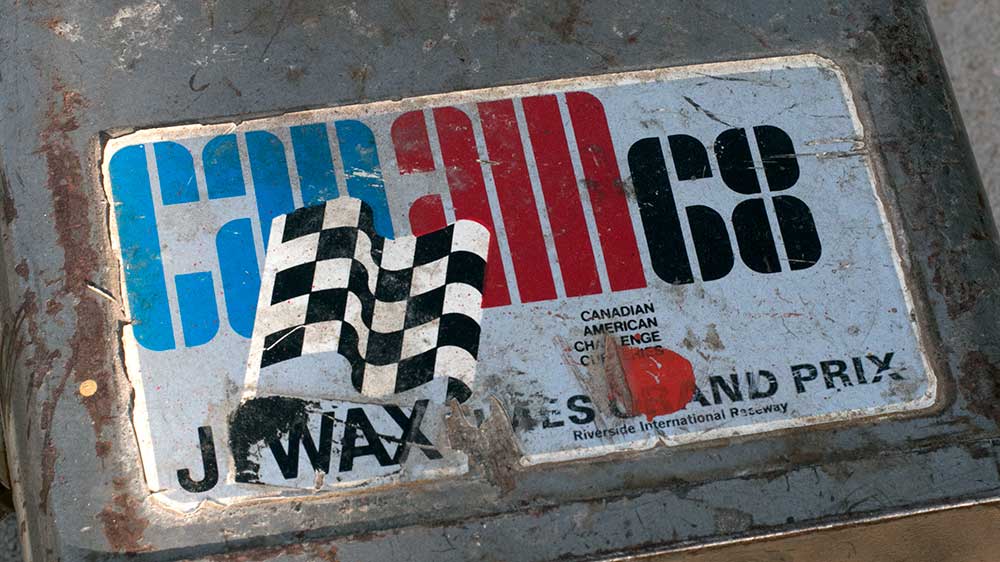
Can-Am Times Grand Prix at the Riverside International Raceway sponsored by J-Wax sticker on my nearly 50-year-old toolbox.
CAN-AM 50th Anniversary
by George Levy. Photography by Pete Biro. Book review by Gary Smith.
1967. The Greatest Spectacle in Racing left me disillusioned. The innovative STP Turbine Car ran away from the Indy 500, but suddenly broke close to the win. Excitement turned to disappointment (keep in mind I was 17 at the time). But when USAC later restricted the turbine car’s performance to the point that it was non-competitive, I lost interest. It’s a bit surprising that they aren’t still racing front-engined roadsters.
The Can-Am was run-what-you-brung unlimited racing. Ah, that’s better.
With twisty roads in abundant supply in southern California, and the Riverside International Raceway only 30 minutes from home, I was inspired by road racing. Full-bodied, beautifully styled, innovative, explosive road racers were extremely exciting. Way over-the-top too cool. When a gaggle of these machines bunched up in their pace lap rolled by, the ground shook. Literally. Can-Am cars, especially the Chaparral, definitely played a roll in my desire to become a car designer.
The CAN-AM inspired creativity and innovation. At least it started out that way.
 CAN-AM 50th Anniversary is a seriously good book. I couldn’t put it down for two reasons. Pete Biro is a great racing photographer, and many of the photos in the book have never been published before. And the book is far more than a play-by-play account of every race. And George Levy weaves a well-written narrative that includes behind the scenes accounts, closed-door discussions, team insights, and driver interviews.
CAN-AM 50th Anniversary is a seriously good book. I couldn’t put it down for two reasons. Pete Biro is a great racing photographer, and many of the photos in the book have never been published before. And the book is far more than a play-by-play account of every race. And George Levy weaves a well-written narrative that includes behind the scenes accounts, closed-door discussions, team insights, and driver interviews.
Stardust 1968. I was there. I used to shoot 8mm movies (See Racing Movies from the ’60s and ’70s, about 32 minutes in). Late in the race I ran out of film (remember film?) and was content to watch my favorite car, Hall’s Chaparral, with binoculars. Stardust was uniquely designed in that is some areas the track looped back fairly close on itself. The Chaparral’s wing would be visible and could be followed when the rest of the car was hidden from view. Suddenly I witnessed what I sickeningly knew to be the Chaparral catapult Itself skyward. In the book, both Jim Hall and Lothar Motschenbacher tell the stories of what happened. I already knew that Lothar’s suspension collapsed. What I didn’t know was that he was also somewhat distracted being on fire. Hall, seriously injured, was also on fire at one point. It’s a miracle that either one survived. You’ll have to get the book to read the accounts. No spoilers here.
Chaparral’s popularity—built and designed in the USA, powered by an American engine, and campaigned and driven by Texans. The only American-built car in the series for several years.
Can-Am cars were monsters, the fastest, most powerful racing cars on the planet at the time. The series drew immense crowds. The prize money was substantial, attracting drivers and teams from all over the planet. Perhaps the coolest thing about the Can-Am were the lack of rules, encouraging innovation. For those that didn’t live through that time period, many of the cars, and especially the Chaparrals, might as well have been alien spaceships.
The Mclarens dominated the series for several seasons. The complete story is in the book. They were powerful, well-designed, well-sorted, and well-driven. Penske and Donohue finally got their act together in 1973 and campaigned the ultimate, 1500+ horsepower Can-Am car, the Porsche 917-30. Donohue WAS the Unfair Advantage. I saw that run at Mid-Ohio. I remember thinking that the car didn’t appear real. It was quiet and just seemed to whisk its way around the track like a phantom. Mark was smooth.
My recommendation: Just get the book.
UPDATE: My 8mm movies (plenty of Can-Am action) from back in the day are back on Dean’s Garage: Racing Movies from the ’60s and ’70s.
Promotional Video
A few images from the book.
From the publisher
Forget the rule book and relive one of the most exciting race series ever with Can-Am 50th Anniversary!
The first rule of Can-Am: There are no rules. Or at least damn few rules. The bodywork had to enclose the wheels and there had to be something that loosely resembled a passenger seat–if your passenger was a badly misshapen human or perhaps a lab monkey. Otherwise, set your racing mind free. No limits to engine options or output, no restrictions on aerodynamic aids or body shape. It was as close to unrestricted road racing as racing had ever gotten or would ever get again. And it was fantastic.
From its introduction in 1966 to the end of its classic period in 1974, North America’s Can-Am series was the most exciting, technologically advanced, and star-studded racing series of the day. Its essentially rules-free formula attracted everyone from crazed backyard engineers to specialists like McLaren, Chaparral, Shadow, and Lola to manufacturers like Ford, Ferrari, Chevrolet, and Porsche. Top drivers including Mario Andretti, Jackie Stewart, Parnelli Jones, Bruce McLaren, Denis Hulme, Dan Gurney, Phil Hill, Mark Donohue, Peter Revson, Jim Hall, Jody Scheckter, Chris Amon, George Follmer and John Surtees competed on tracks across the US and Canada taking time off from Formula One schedules and other duties to drive in Can-Am because the racing and the cars were so exciting.
Can-Am 50th Anniversary offers a heavily illustrated look back at what is arguably the greatest race series ever to grace the roadracing circuits of North America. Photographer Pete Biro was Goodyear Tire’s official photographer and followed the series throughout the entire run from 1966-’74. The vast majority of the book’s images are unpublished or long out of circulation. Biro brings his unique perspective and his close relationship with the drivers, team owners, and constructors to bear on the captions while former AutoWeek editor George Levy provides an exciting text reflecting the thrill of Can-Am racing.
About the Author and Photographer
Author George Levy is a longtime automotive journalist and marketer with a strong focus on motorsports. He is the former editor of Autoweek magazine and sits on the board of the Motorsports Hall of Fame of America. Levy is based in Detroit, Michigan.
Photographer Pete Biro began shooting motorsports in the 1950s, contributing to magazines such as Road & Track and Car and Driver. As his career progressed, his work found greater fame on the pages of outlets such as Time, LIFE, and Sports Illustrated, eventually garnering high-profile clients like the Big Three US automakers and Goodyear Tire. He followed the Can-Am series throughout its 1966 to 1974 glory years, becoming good friends with its top drivers, team owners, and engineers.

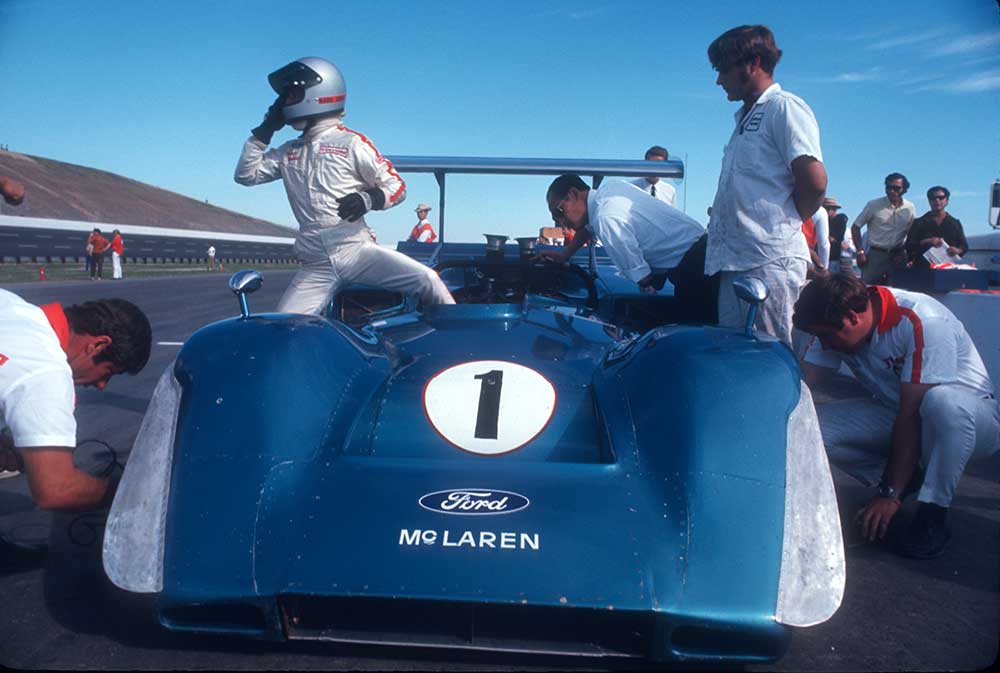
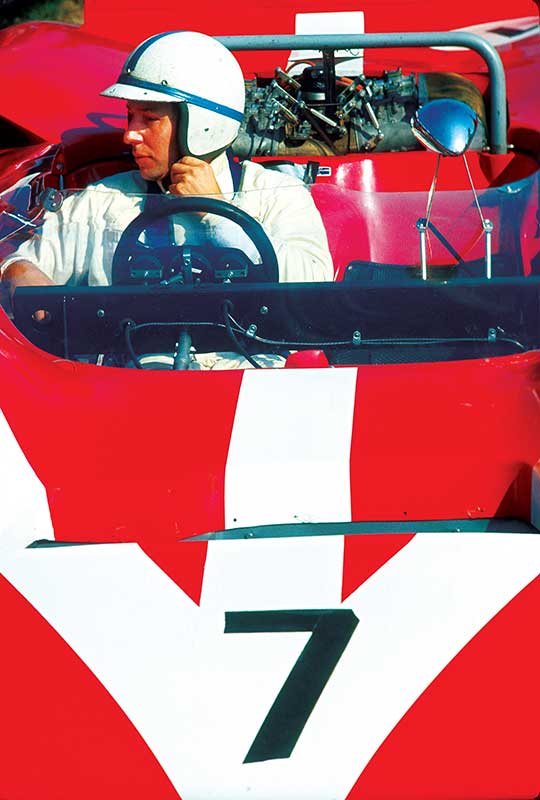
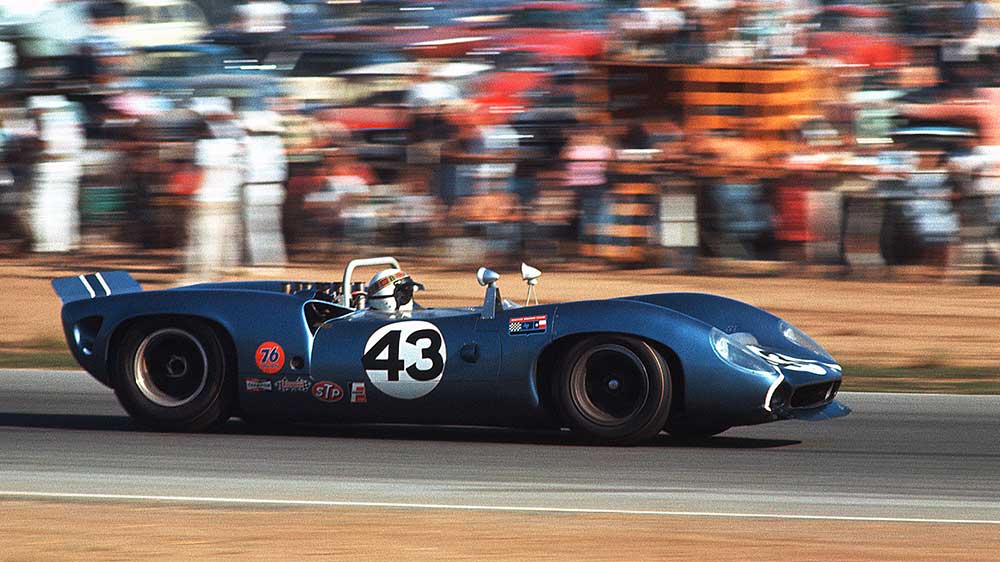
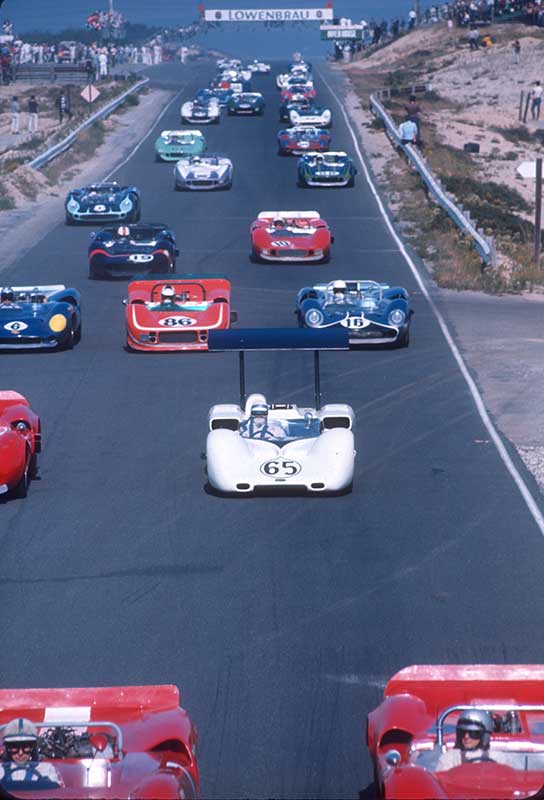
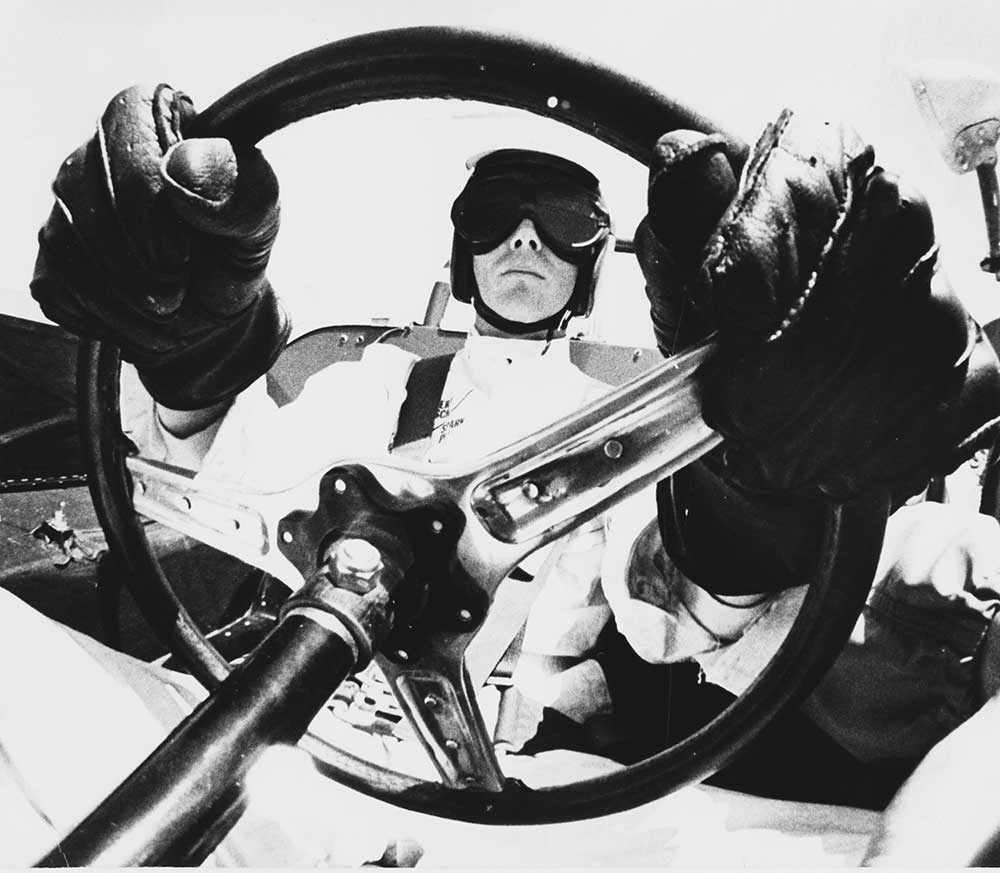
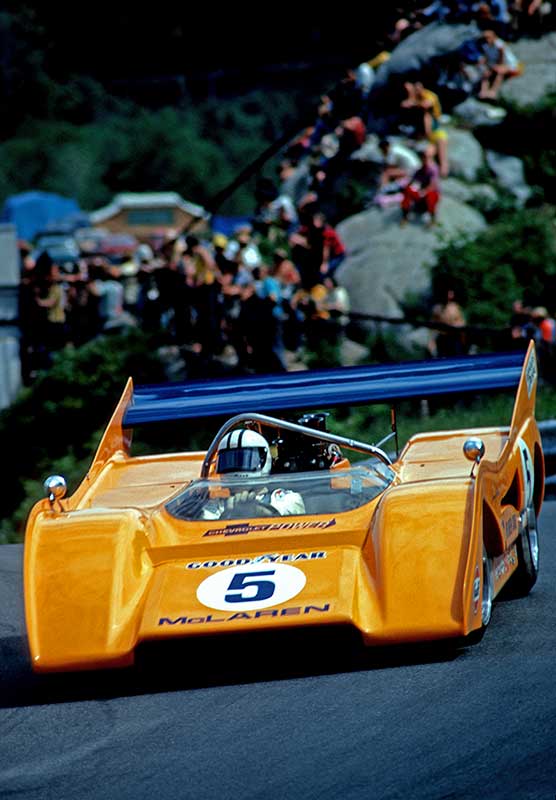
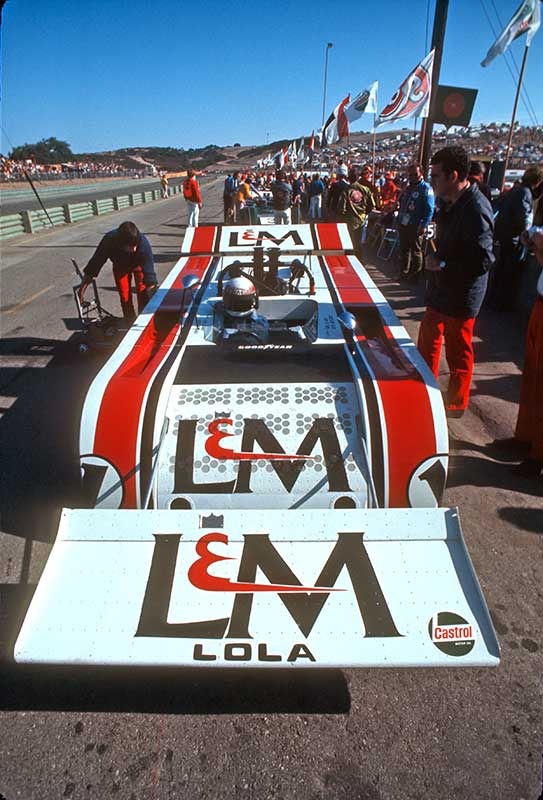
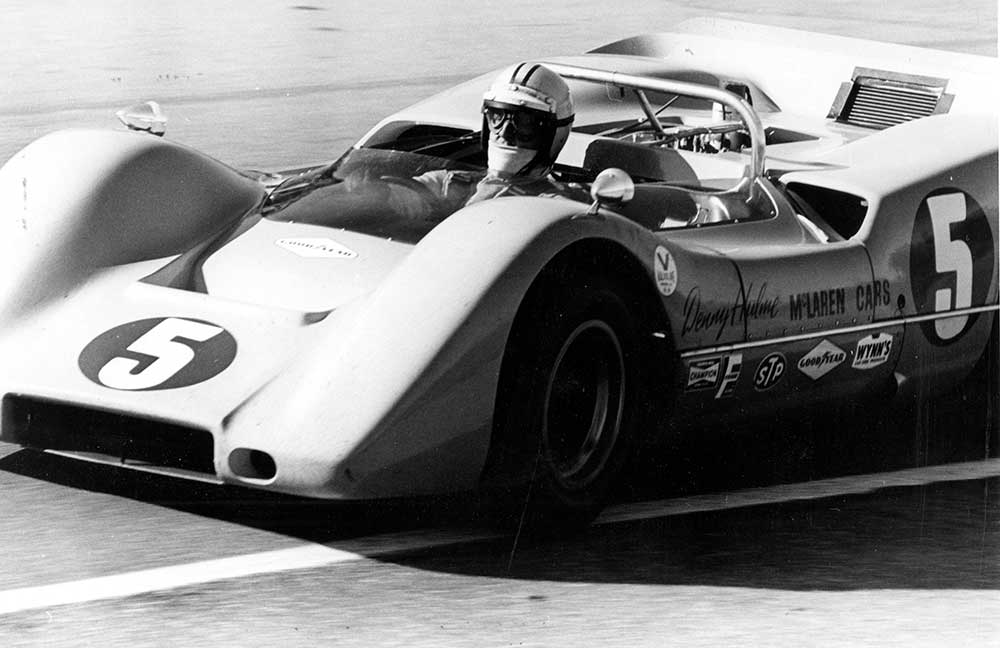
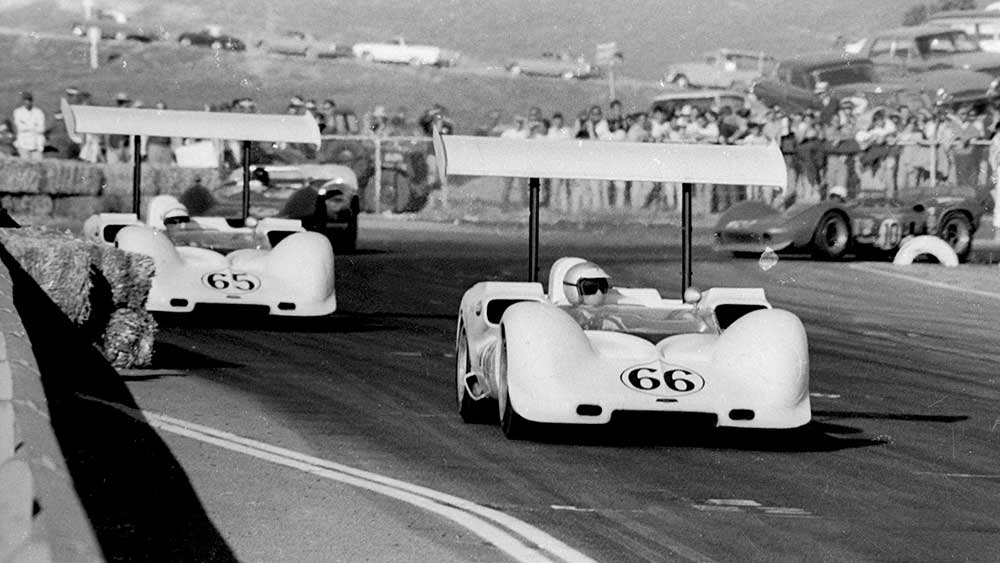
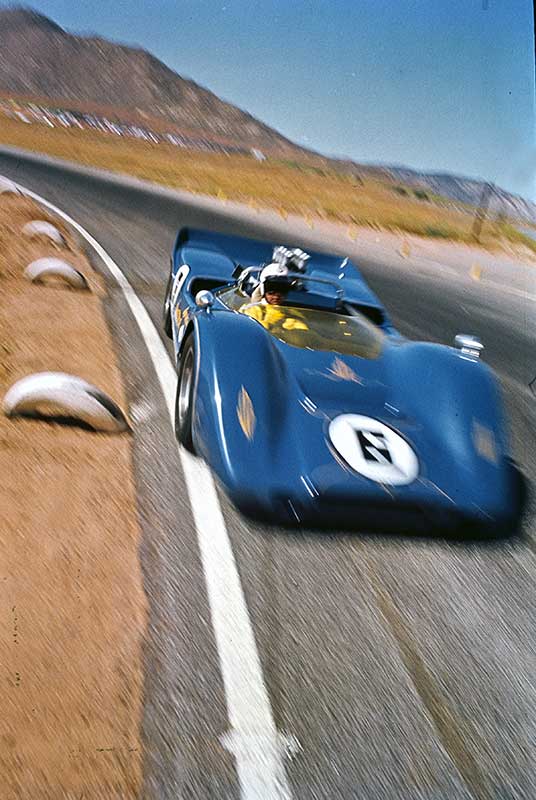
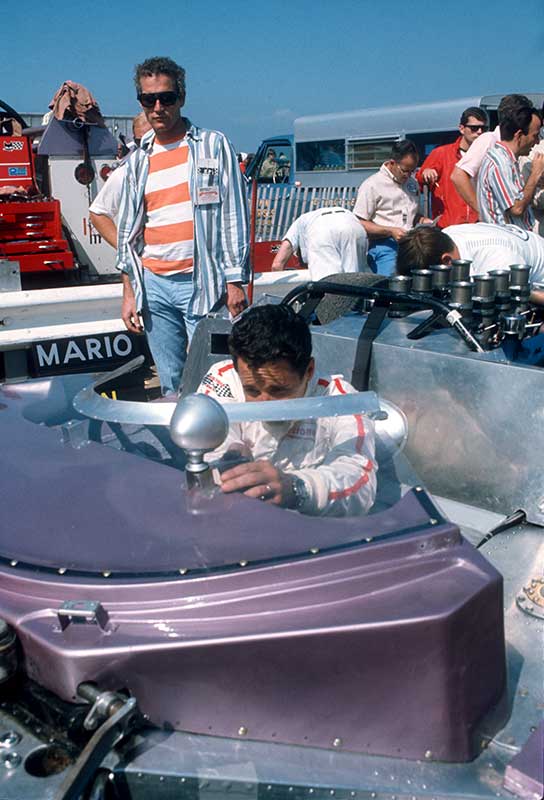
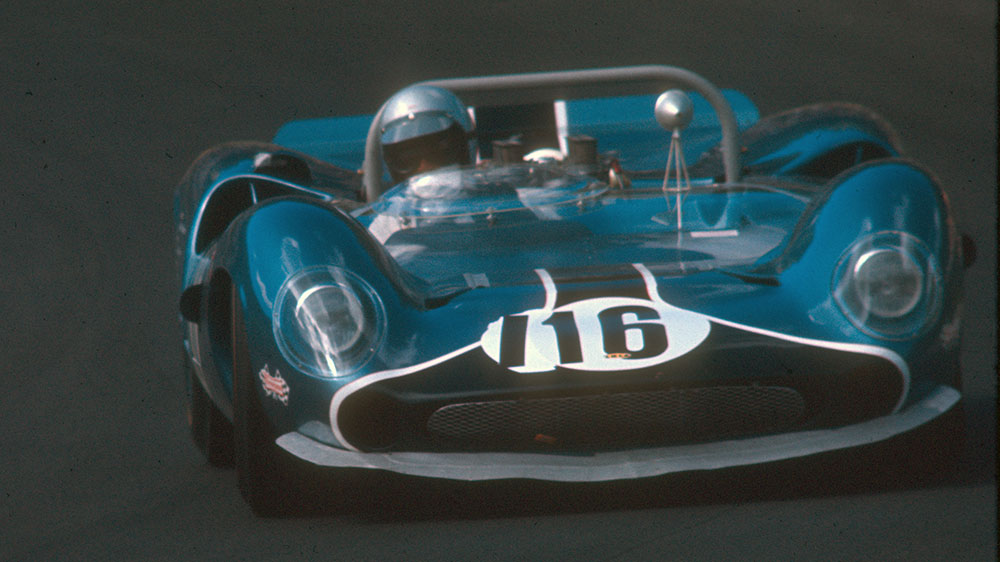
No question Levy and Biro have produced a classic. One of the best books ever written on any type of racing. Peter Brock
No rules. No excuses. Whoever is first wins. A forgotten formula to correct everything that is wrong with Indy and F-1. Hardly wait to read the book. Where can I buy it?
You could leave out Levy’s text and Pete Biro’s photos wuld be worth the price and then some.
Definitely the glory days of racing. I never missed a Times Grand Prix at Riverside Raceway.
Received the book for Christmas from my son, and I have had a chance to actually read it. The best thing is the narrative from the driver’s point of view: It is like a private interview with some of the greatest drivers and constructors…the inside scoop.
George can write, but he desperately needs a decent editor.